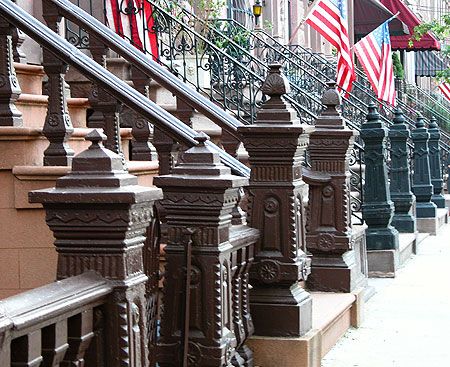
Cast-iron newel posts first made their appearance in front of 19th-century rowhouses. During the Industrial Revolution, they served as striking punctuation marks on American city stoops. Today, not only can they hearken back to older sophistication, but they can also lend your home some valuable structural support.
Affordable Elegance
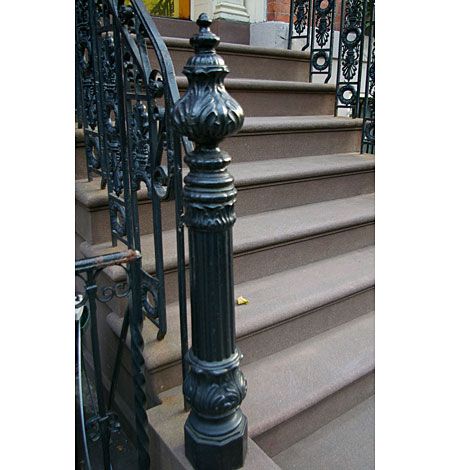
The popularity of decorative cast iron stemmed from its unique combination of durability, fire resistance, and affordability. Unlike wrought iron, which was hand-shaped by skilled artisans, cast iron could be mass-produced at the same foundries that gave birth to iron locomotives and statues.
The Ease of Casting
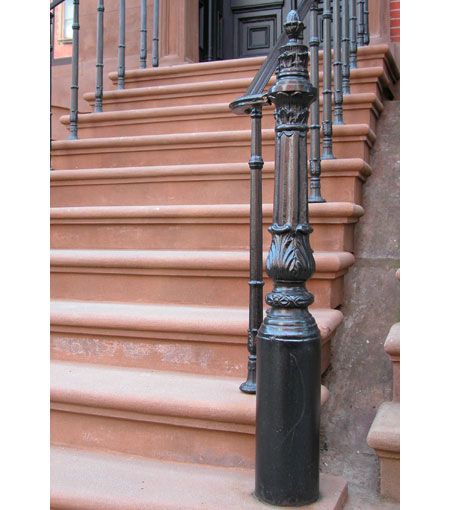
Victorian manufacturers used blast furnaces to melt iron alloy down to a liquid state. Then, they poured the liquid metal into molds that formed the intricate details of iron staircases. This lowered costs for middle-class townhouse owners, as well as speculative builders and landlords who wanted to give their urban rowhouses an air of affordable distinction.
Modular Assembly
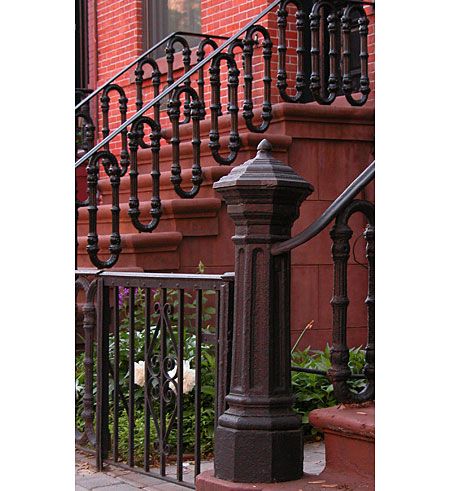
Box-style newels, and the railings they were attached to, got molded in segments: the finial or cap, side panels, and collar. That made it easier to transport them from the factory. The “ready to assemble” units were shipped in parts and joined on-site with bolts, screws, and bars. Workers then painted over the seams, screws, and bolt heads to make the newel look seamless.
Architectural Accessories
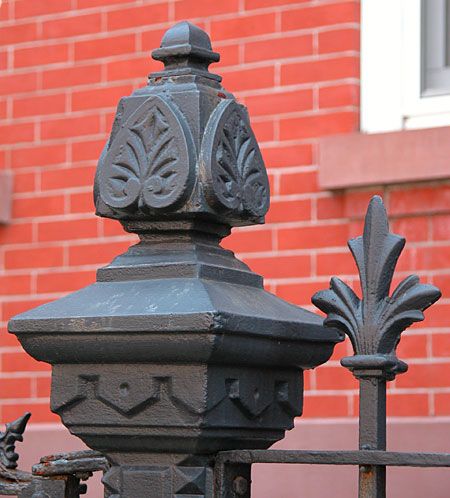
Old newel posts often set the tone for the interior architecture of a townhome. If they were simple and understated, so was the inside of the home, and vice versa. Every staircase on the block had a personality of its own, bridging the spaces in each home together.
A New Twist on Tradition
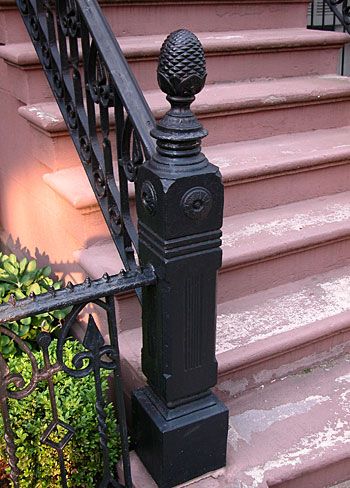
Cast iron’s malleability allowed ironworkers to reproduce elements traditionally seen in carved wood or stone. This pinecone finial atop a reeded post exudes Federal-style architecture.
Victorian Classicism
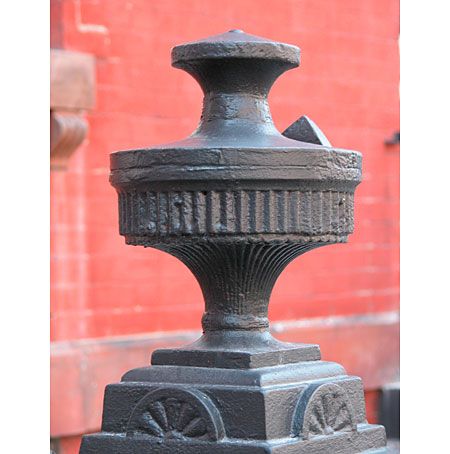
The Eastlake-style post shown here demonstrates how Victorian designers were fascinated with classical forms. Its intricately fluted cap is shaped like a covered urn.
Eastlake stylings emphasize both geometric patterns and intricate ornamentation. Cast-iron manufacturers could do the job, and with a minimalist approach, this newel carries over well to the modern day.
Asian Inspiration
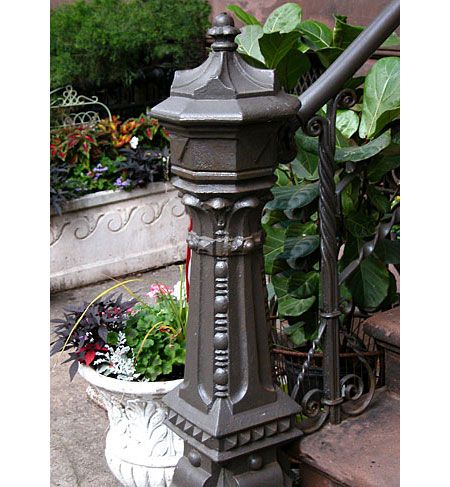
Globally-inspired “exotic” designs grew as Victorians started to travel more. This Newel post’s pagoda-like cap reflects the period’s fascination with Asian style.
Alternate Designs
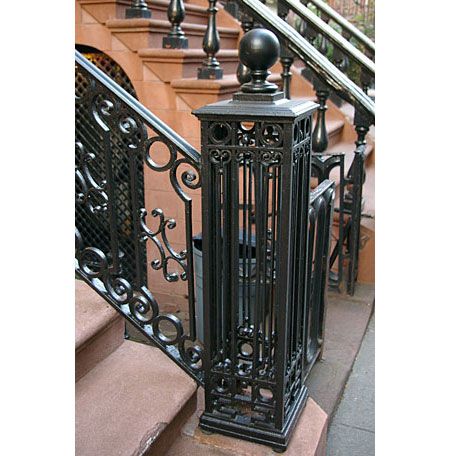
Not all cast-iron newels were solid structures. Some designs incorporated open, fence-like segments that could be boxed or curved to create large, airy pieces. The above design feels lighter with its use of empty space, but doesn’t compromise on the strength and durability associated with cast-iron.
Tall and Thin
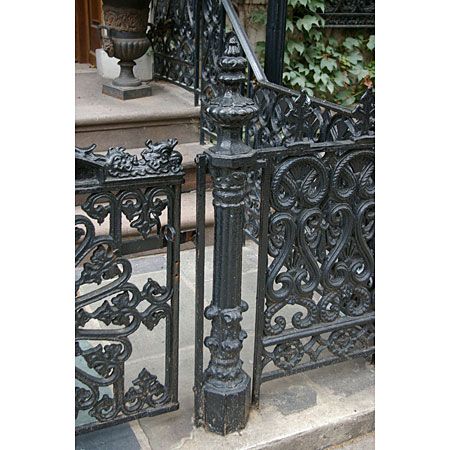
Some designers used more delicate cast-iron posts to anchor gates and elaborate fences. They were more lightweight than the surrounding fencing and railing, but were just as durable and secure.
Proper Proportion
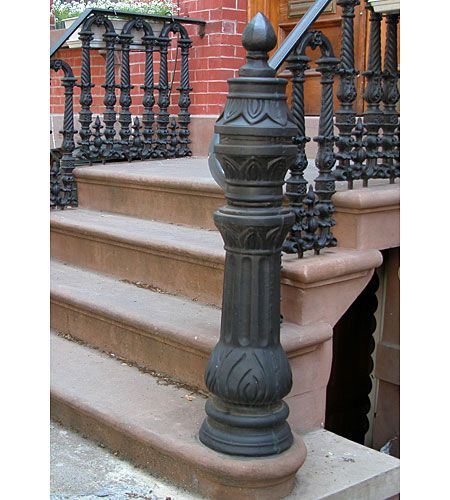
A stoop with fewer steps needs a shorter newel so as not to overwhelm the shortened stair. This home’s designer paid particular attention to scale and proportion but didn’t compromise on intricacy.
Rust Prevention
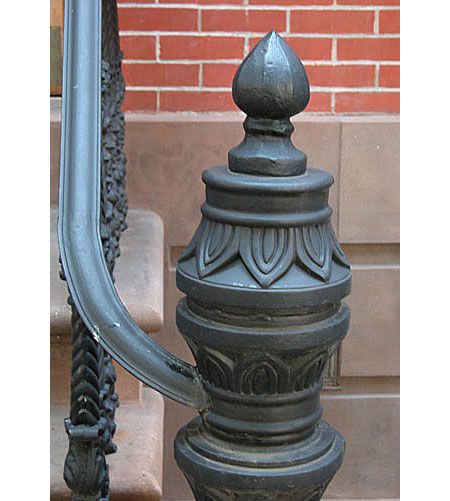
What Victorians bolted together, time will eventually put asunder. Cast iron is durable and resilient, but you must maintain it to preserve its beauty and integrity.
For example, the bolts and screws holding the modular pieces together may loosen. Tighten them up as necessary, or replace the old fasteners with better-quality stainless steel ones. Seal the seams with polyurethane caulk, and scrape and repaint as necessary. If water seeps into the hollow interior of the newel, the metal can start to corrode from the inside.
Cast-Iron Care
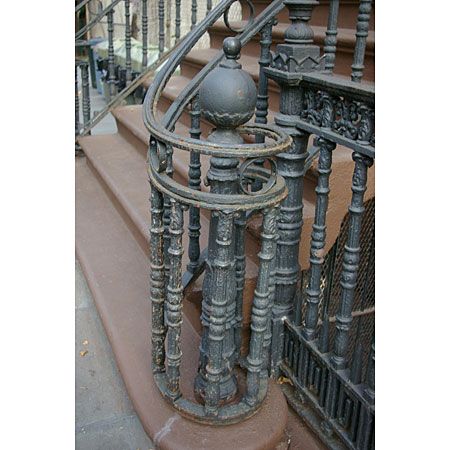
When you first see rust, clean it off with a wire brush. Prime exposed areas with a paint specially formulated for metal surfaces. Even a few hours’ worth of exposure to oxygen and moisture can give you more rust at the end of the day.
Patching Tips
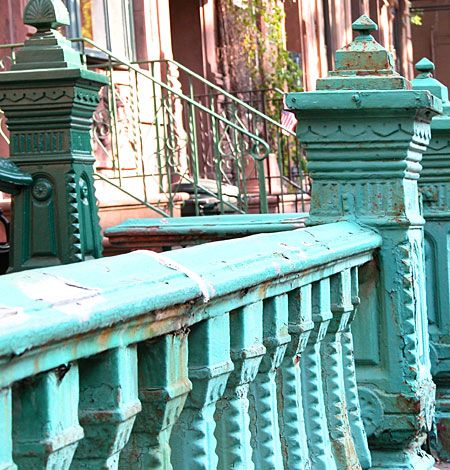
You may be able to patch minor cracks in the cast iron with auto-body filler. Don’t fill the posts, or any size cracks, with Portland cement, concrete, or other porous material. Doing this can trap moisture against the iron and speed up corrosion. As you patch, use waterproof sealants to prevent further damage.
Protect the Post with Paint
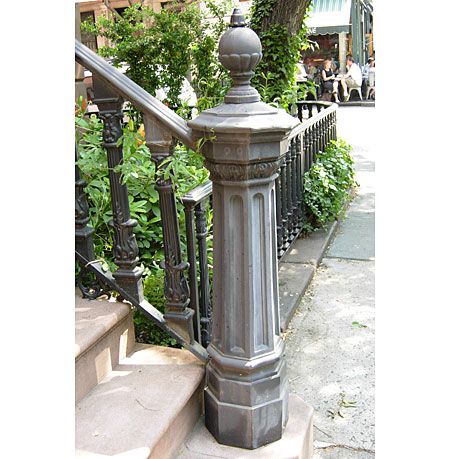
Basic black is the most familiar finish for ornamental cast iron, and matte paint is better at showing off intricate designs than glossy paint.
However, authentic period colors also included bright whites, brick reds, and different dark and light shades of green to imitate copper verdigris. Choose a thoughtful paint scheme that protects the metal and celebrates the posts’ historical charm.
Replacement Candidate
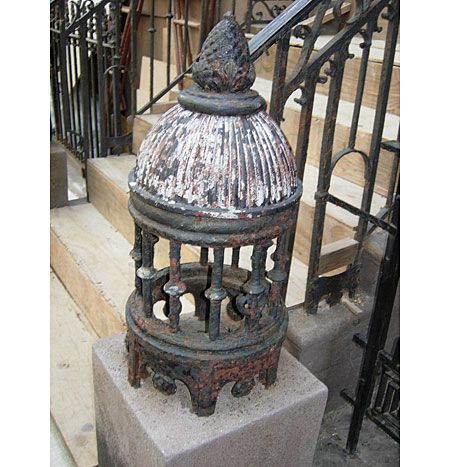
Many Victorian newel posts were removed in the mid-20th century, either due to changing tastes or irreparable corrosion. Severely deteriorated posts need professionals to restore or replace them.
Two companies that might be able to help are The Stewart Iron Works Company in Covington, Kentucky and Architectural Iron Company in Milford, Pennsylvania. Both teams specialize in making convincing reproductions based on period models.
Stoop Maintenance
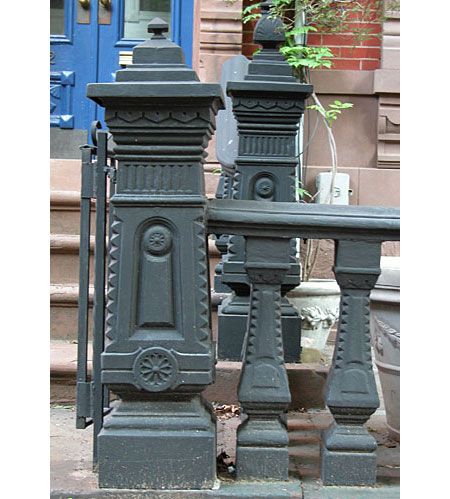
The stability of the staircase supporting the newel post determines its longevity. Any shifting in the foundation beneath the post can lead to cracks in the metal. Cast iron is hard, but it’s also quite brittle and prone to breakage, especially in cold weather.
Regularly inspect your home’s foundation, as it relates and doesn’t relate to the stoop. Taking a whole-home approach will help preserve the newel posts’ appeal.
More Cast Iron Information

If you’re interested in diving deeper into newel posts’ history and preservation, the National Park Service has prepared Preservation Brief 27, “Maintenance and Repair of Architectural Cast Iron.” The authors, including an AIA-certified architect, go in-depth on the different architectural elements and how to take care of them.
